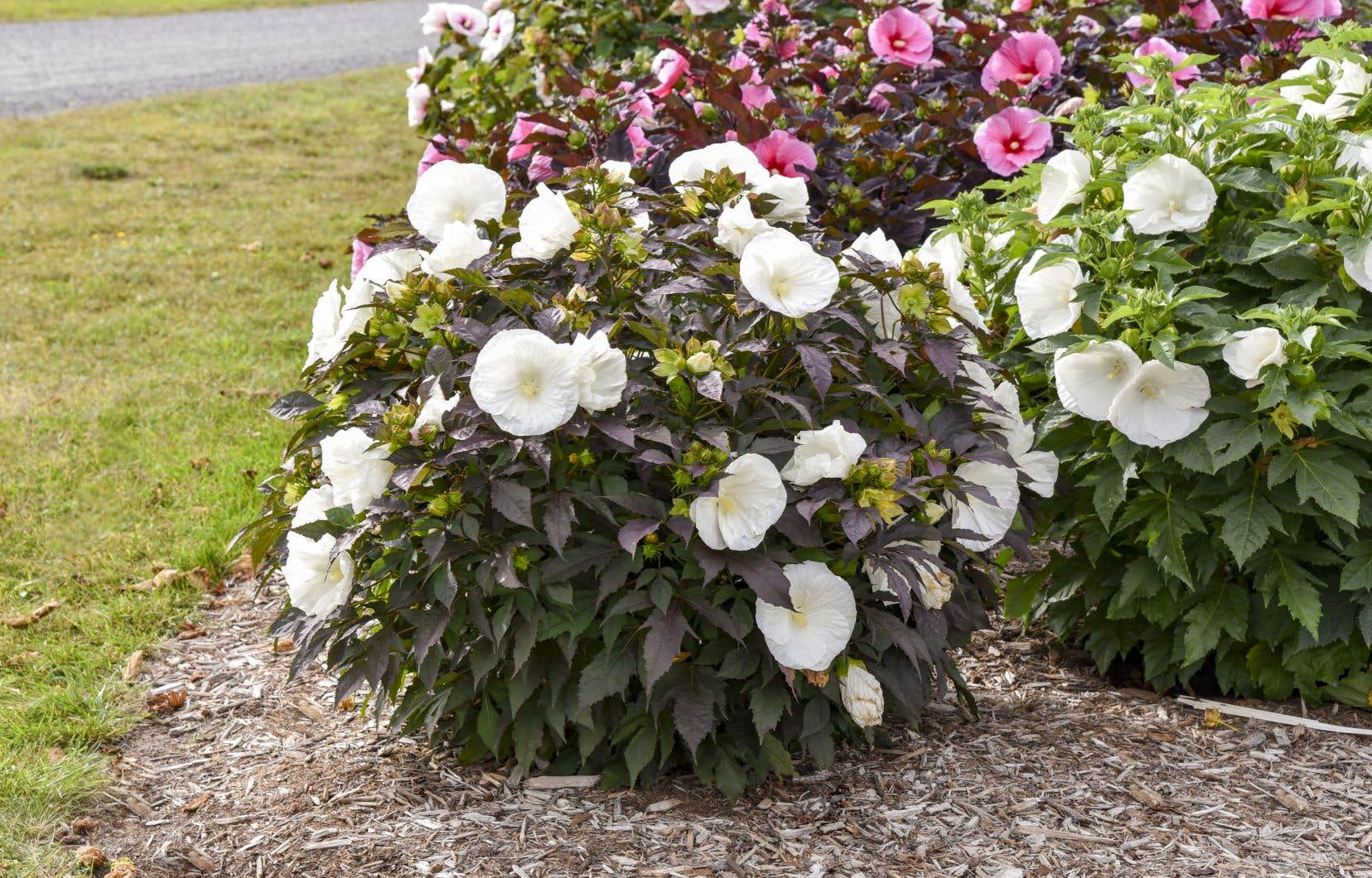This text is part of the special Pleasures notebook
In the garden, plant associations in a thousand colors, materials in increasingly unusual shades and the reflections of the sun which play with the textures offer the possibility of creating living and changing canvases throughout the seasons.
Every color has the power to evoke a feeling or to be associated with an event or our mood. In the garden, she enjoys changing perspectives to create illusions of depth and focal points for the pleasure of the eyes. Here are some ideas before you start planning an expressive space that tells a colorful story.
Cold colors
Blue, green and purple are cool colours that are soothing. Since they provide depth, they should be placed in the background or around the perimeter of a narrow garden in order to make it appear wider. In a deeper garden, you can afford to place cool shades in front in order to close the space.
Warm colors
Yellow, orange and red are vibrant hues that draw the eye. They are best placed in the background in a wider space and closer in a narrower site.
The White
A perfect companion, it goes well with most floral colours. It brightens up shady areas and brings out the beauty of cool-coloured plants. Combined with pink, blue or purple, white is the ideal complement in creating romantic and rustic gardens.
The green
Green supports the colorful flowering of the plants it is next to and structures the space. Contrasting shades benefit from its presence.
The winning combinations
Combining colors in the garden is probably the most complex step in creating and achieving a harmonious landscaping project. For a successful combination, you must first consider the theme of the garden, the covering of the residence, the choice of inert materials, the existing vegetation and the exposure of the site. Once these design phases have been analyzed, the planning of the plant selection can begin. But you must avoid imagining an overly busy ensemble without a common thread by mixing too many shades in the same space.
How to create a balanced work?
• Limit your plant selection to a palette of three colors maximum, the intensity of which you can modify by having fun with the hues.
• Use similar tones and some contrast for more striking depth effects.
• Play with warm and cool colors to structure the space.
• Use the color wheel to help you with your combinations since the colors arranged opposite each other on the wheel are complementary colors. Place plants of complementary colors next to each other to create winning combinations.
• Install bright, colorful pots throughout your landscape to establish focal points.
• Respect the flowering periods of the chosen plants in order to transform and color your garden according to the seasons.
A monochrome garden
Tone-on-tone landscaping is becoming increasingly popular. While this particular style requires careful planning due to the constraints imposed on the selection of plants, the monochrome garden is another great option for those who want to stand out. Whether it is a simple flowerbed or a complete project, the choice of the color that will prevail must be in accordance with its role in the garden and its location. Flowers, foliage and accessories will be able to showcase the rich palette of the chosen color.
The trend of the year
Professionals in the horticulture sector are unanimous: one of the big trends of the year is undoubtedly plants with dark foliage, embellished with pale flowers. The chic of dark leaves and the softness of flowers in paler colours form a harmonious blend. To add an original touch to your flowerbed, why not try a plant whose duality is its charm? Succumb to the astilbe ‘Dark Side of the Moon’ or the hibiscus Summerific® ‘Cookies and Cream’!
This content was produced by the Special Publications Team of Dutyrelevant to marketing. The writing of the Duty did not take part in it.
